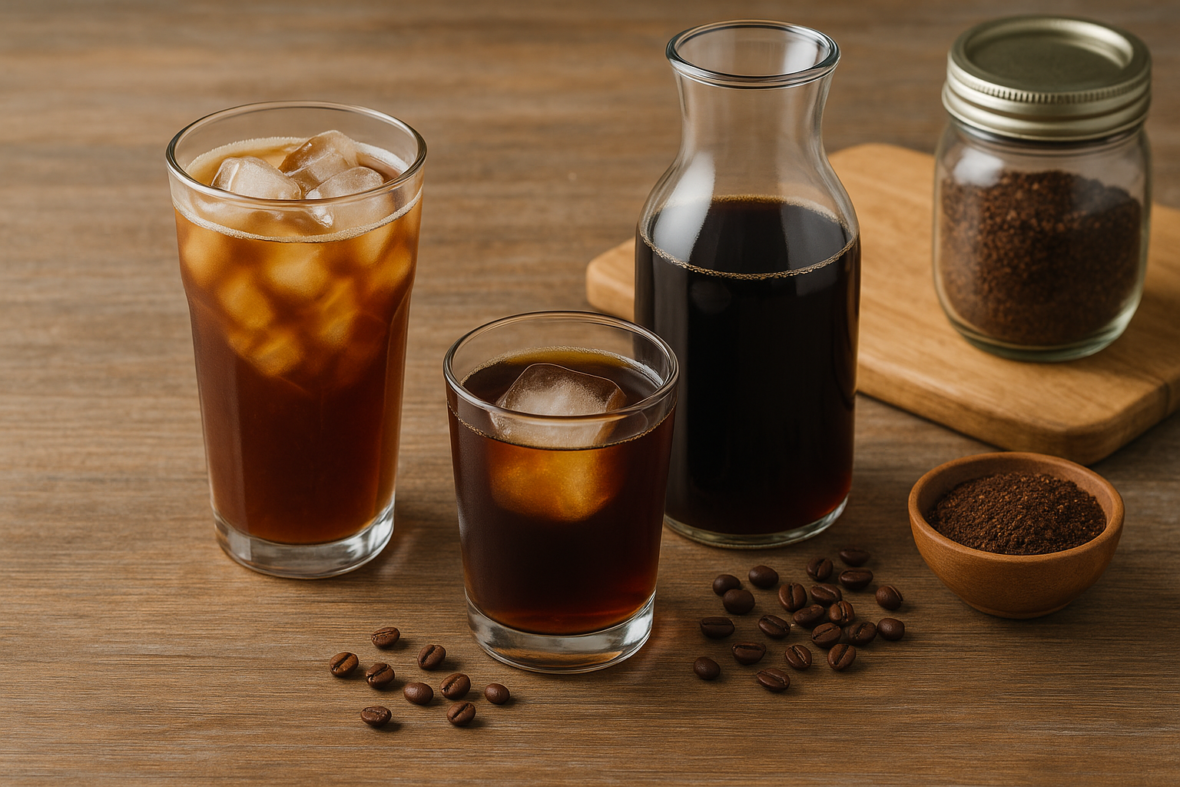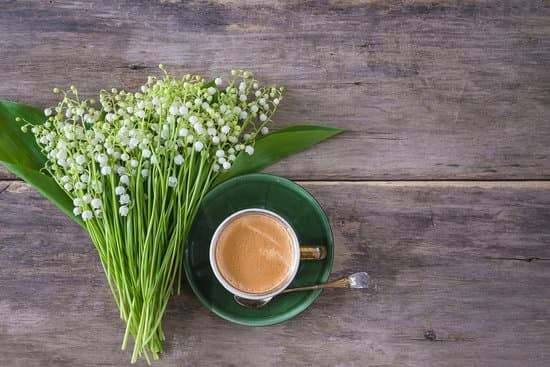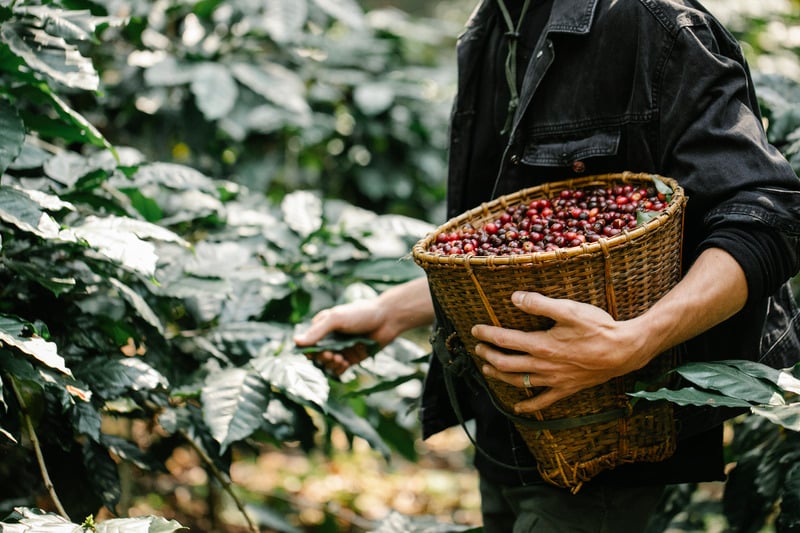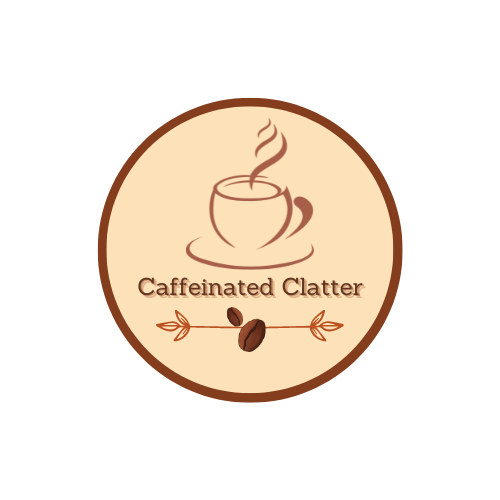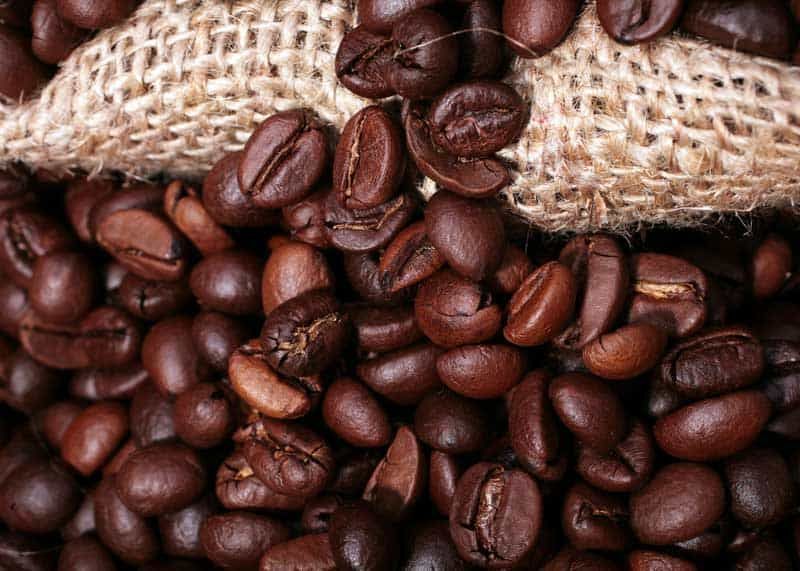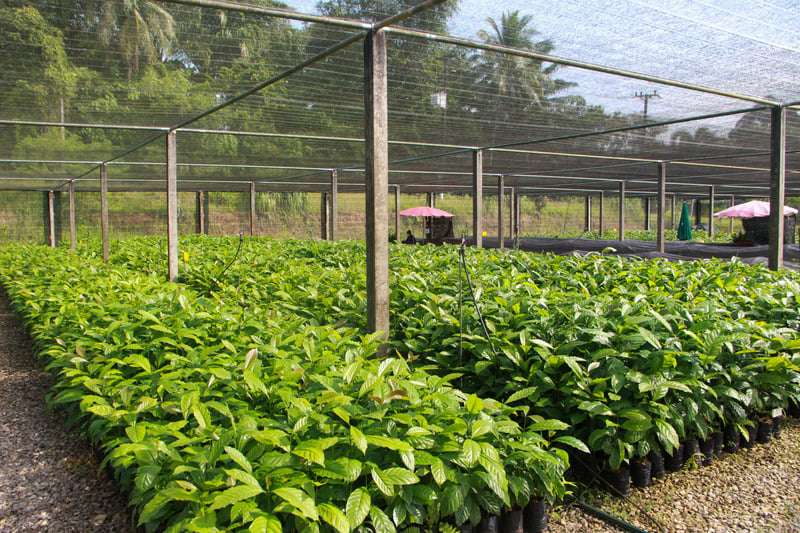Is cold brew just iced coffee with better marketing? Not exactly. Cold brew is brewed with cold water over many hours, which changes what ends up in your cup: taste, strength, cost, and even how your stomach reacts. In this guide, I’ll break down the real differences so you can decide when cold brew is worth making (or ordering).
Quick Difference Snapshot
| Aspect | Cold Brew | Iced Coffee |
|---|---|---|
| Brew Temp | Cold or room-temp water | Hot water |
| Brew Time | 12–24 hours steep | Minutes |
| Flavor | Smooth, lower perceived acidity | Brighter, sharper, more roast bite |
| Strength | Brew strength is fixed at brew time | Brew strength fixed at brew time |
| Cost Factors | Time, beans, storage | Brew-on-demand |
What Makes Cold Brew Coffee Different?
Cold brew starts before you even think about ice. Instead of extracting coffee compounds quickly with hot water, you soak coarse grounds in cold or room-temperature water for many hours. This slow method pulls a different mix of flavor compounds compared with hot brewing. When you later add water, milk, or ice, you are diluting a brewed concentrate, not cooling down a hot cup.
Iced coffee is simple: brew hot, cool it fast, serve over ice. Because it was extracted hot, it carries the acidity, aromatics, and roast brightness that come with heat-driven extraction. Those flavors can be great, but they are not the same thing you get from a slow cold steep.
If you taste them side by side, you’ll see it: cold brew tends to drink round and mellow; iced coffee tastes like a chilled version of whatever you brewed hot.
The Brewing Process: Cold Water, Slow Extraction
Cold brew relies on time, not temperature. The basic method:
- Combine coarse ground coffee and cold (or room-temp) water. A common starting ratio for concentrate is 1 part coffee to 4 parts water by weight.
- Steep 12 to 24 hours. Longer = more extraction, up to a point.
- Strain through a fine filter, cloth, or paper.
- Dilute concentrate to taste when serving (often 1:1 with water or milk, but adjust).
How that differs from iced coffee:
- Iced coffee is brewed hot at standard brew ratios (roughly 1:15 to 1:17), then cooled or brewed double-strength and poured over ice to compensate for melting.
- Heat extracts acids, aromatics, and bitter compounds faster. Cold extraction moves slower and pulls fewer of the sharp, bitter elements that build up in hot brewing.
Because cold brew is brewed at a high ratio and stored as a concentrate, cafés can batch large volumes ahead of service, then portion and dilute quickly.
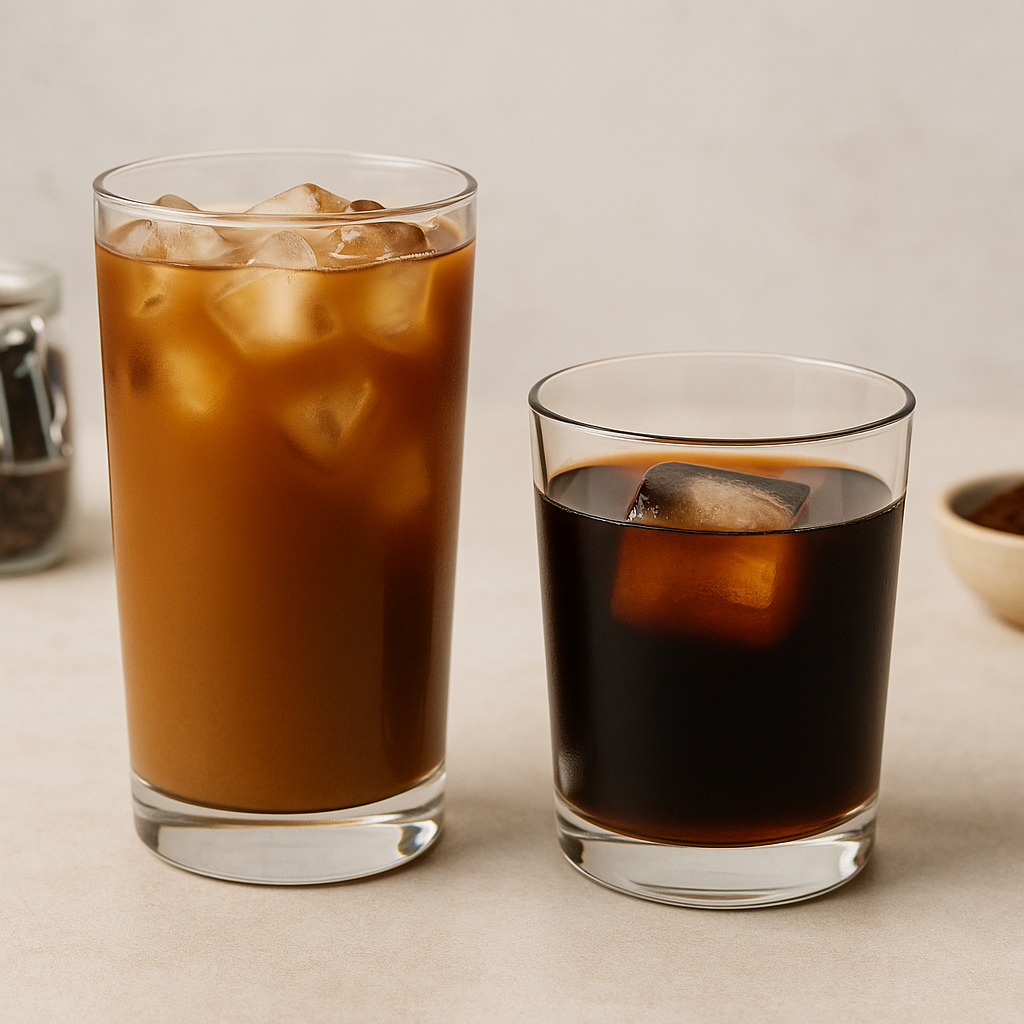
Why Cold Brew Tastes Smoother
Many coffee drinkers call cold brew smooth. Here is why that perception sticks:
- Cold water extracts fewer of the bitter-tasting compounds that dissolve readily in hot water.
- Lower extraction of certain organic acids means the drink feels less sharp on the palate.
- Sugars and some chocolatey or nutty notes remain, giving the cup a rounder profile.
- Darker roasts translate to a deeper, cocoa-forward cold brew; lighter roasts can come across tea-like or fruity but often muted compared with hot brews.
A note on acidity: Lab measurements show pH differences between hot and cold brews are sometimes small, yet the perceived acidity when drinking can still be lower in cold brew. Taste perception matters more than numbers for most drinkers.
Does Cold Brew Have More Caffeine?
Short answer: it depends on how you drink it.
Here’s the breakdown:
- Concentrate strength: Many cold brews are steeped strong (1:4 or similar), so the concentrate can carry a high caffeine load.
- Dilution at service: Most cafés cut the concentrate with water, milk, or ice. After dilution, the caffeine per serving may be similar to, higher than, or even lower than a standard hot brew, depending on ratios.
- Bean choice and grind size also matter: Higher-yield beans, robusta blends, and longer steep times can raise total extraction.
A rough comparison: A 16-oz serving made from a 1:1 diluted concentrate can land in the same caffeine range as a large drip coffee. But no two recipes are identical. If you need to track caffeine, ask for the brew ratio or start with smaller pours at home.
Why Cold Brew Costs More at Cafés
Cold brew pricing makes sense once you see the back-of-house work:
- Time commitment: Steeping ties up batch containers for half a day or more.
- Higher coffee usage: Concentrate recipes use more grams of coffee per serving than drip.
- Storage: Refrigerated space holds brewed concentrate in sealed kegs or buckets.
- Waste risk: If a batch does not sell, the café absorbs the loss of beans and labor.
At the same time, cold brew is efficient once batched. Staff can pour and serve fast during rush hours, and customers like ordering it in warm weather. That combination keeps it on the menu even with higher production costs.
Can You Make Cold Brew at Home?
Yes, and you do not need special gear to get started. A jar, French press, or pitcher works fine.
Basic Ratio (Concentrate):
1 cup (85 g) coarse-ground coffee
4 cups (950 ml) cold water
Steps:
- Combine grounds and water; stir to wet all coffee.
- Cover and steep 12 to 24 hours at room temperature or in the fridge. Taste at 12 hours; longer steep draws more intensity.
- Strain. Use a fine mesh plus paper or cloth for a cleaner cup.
- Dilute to taste. Start 1:1 (equal parts concentrate and water or milk). Adjust stronger or lighter.
- Store sealed in the fridge up to 7 days for best flavor. Smaller daily batches taste fresher.
Flavor Tweaks:
- Use medium roast for balance; dark roast for chocolate-heavy notes; light roast for a brighter, tea-like cup.
- Add a pinch of salt to the grounds if bitterness creeps in.
- Try a cinnamon stick or orange peel in the steep for a flavored batch (remove before storing).
What Sets Cold Brew Apart (Takeaways)
- Cold brew is brewed cold over many hours; iced coffee is hot coffee cooled down.
- The slow cold steep yields a smoother, lower perceived acidity drink.
- Strength and caffeine depend on how the concentrate is diluted.
- Higher bean use and long prep drive café pricing.
- Home cold brew is easy, scalable, and forgiving.
Try tasting cold brew and iced coffee side by side with the same beans. The contrast tells the story better than any label.
Cold Brew Coffee FAQs
Is cold brew stronger than iced coffee?
Only in concentrated form. Once diluted, cold brew can land near drip coffee strength. Ask about ratios or adjust at home to control caffeine.
Does cold brew have less acid?
It usually tastes less sharp because cold extraction pulls fewer acidic and bitter compounds. Actual lab acidity varies by bean and recipe, but most people find it gentler to drink.
Can I make cold brew with any beans?
Yes. Flavor changes with roast and origin. Medium or dark roasts give a chocolatey, low-bite cup that many people like over ice. Light roasts can taste delicate; grind slightly finer (but not too fine) to coax out more character.
How long does cold brew keep?
Refrigerated concentrate stays good for about a week if sealed. Flavor fades after that. If it smells flat or sour, brew a fresh batch.
What ratio should I use to serve it?
Start with 1 part concentrate to 1 part water or milk. Taste and adjust. For a lighter drink, go 1:2 (one part concentrate, two parts water).
